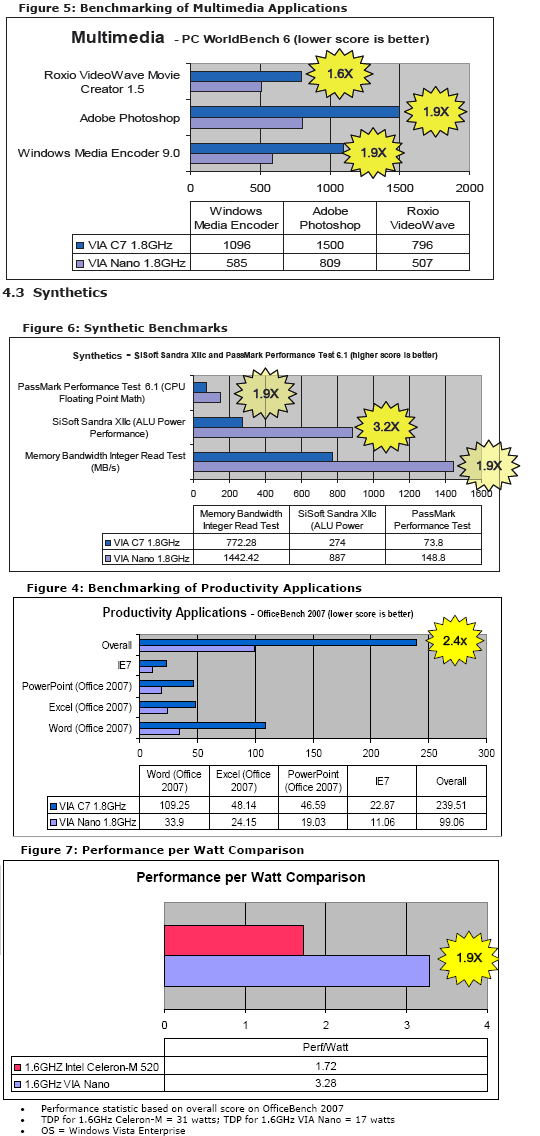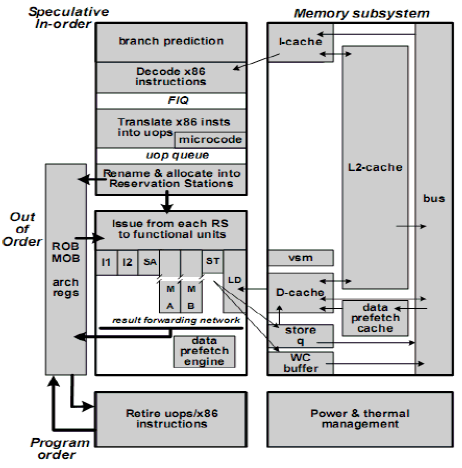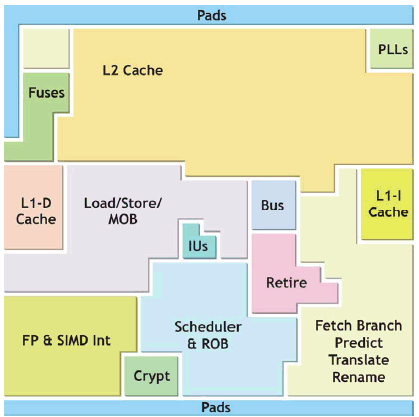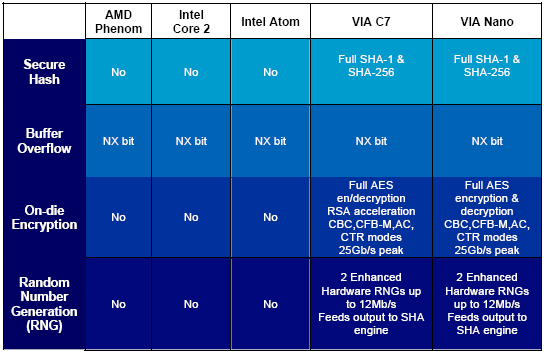
Building on the market-leading energy efficiency of the VIA C7 processor family, the VIA Nano processor family offers as much as four times the performance within the same power range to extend VIA’s performance per watt leadership, while pin compatibility with VIA C7 processors will ensure a smooth transition for OEMs and motherboard vendors, and provides them with an easy upgrade path for current system or board designs.
The first 64-bit, superscalar, speculative out-of-order processors in VIA’s x86 platform portfolio, VIA Nano processors have been specifically designed to revitalize traditional desktop and notebook PC markets, delivering truly optimized performance for the most demanding computing, entertainment and connectivity applications, including Blu-ray Disc™ HD video playback and the latest PC games, such as Crysis.
The VIA Nano processor family leverages Fujitsu’s advanced 65 nanometer process technology for enhanced power efficiency, and augments that with aggressive power and thermal management features within the compact 21mm x 21mm nanoBGA2 package for an idle power as low as 100mW (0.1W), extending the reach of power efficient green and silent PCs, thin and light notebooks and mini-notes around the world.

VIA Nano processor family specifications:
Here are some benchmark figures from VIA that compare the new VIA Nano 1.8GHz CPU to the old VIA C7 1.8GHz CPU with the new VIA VX800 digital media IGP chipset. The firm also claims the VIA Nano 1.6GHz offers 1.9x more performance per Watt than Intel's Celerom-M 520 1.6GHz.VIA Nano L2100 processor: 1.8GHz, 800MHz bus interface, 25W max power , 500mW idle power VIA Nano L2200 processor: 1.6GHz, 800MHz bus interface, 17W max power, 100mW idle power VIA Nano U2400 processor: 1.3+GHz, 800MHz bus interface, 8W max power, 100mW idle power VIA Nano U2500 processor: 1.2GHz, 800MHz bus interface, 6.8W max power, 100mW idle power VIA Nano U2300 processor: 1.0GHz, 800MHz bus interface, 5W max power, 100mW idle power

VIA Nano architecture overview:

VIA Nano block diagram:

VIA Nano security features:

The VIA Nano processor family boasts the highly efficient VIA V4 bus interface and brings a host of technology firsts to VIA’s processor platform line-up, including:
64-bit Superscalar Speculative Out-Of-Order MicroArchitecture: Supports a full 64-bit instruction set and provides for macro-fusion and micro-fusion functionality, and sophisticated branch prediction for greater processor efficiency and performance.
High-Performance Computation and Media Processing: The high-speed, low power VIA V4 Front Side Bus starting at 800MHz, plus a high floating point unit, support for new SSE instructions, and two 64KB L1 caches and 1MB exclusive L2 cache with 16-way associativity gives a big boost to multimedia performance.
Advanced Power and Thermal Management: Aggressive management of active power includes support for the new “C6” power state, Adaptive PowerSaver™ Technology, new circuit techniques and mechanisms for managing the die temperature, reducing power draw and improving thermal management.
Scalable Upgrade to VIA C7™ Processor: Pin-to-pin compatibility with current VIA C7 processors enables a smooth transition for OEMs and mainboard vendors, enabling them to offer a wider range of products for different markets with a single board or system design.
Greener Technology: In addition to full compliance with RoHS and WEEE regulations, product manufacturing will be halogen-free and lead-free at launch, helping to promote a cleaner environment and more sustainable computing.
Enhanced VIA PadLock™ Security Engine: Industry-leading on-die hardware cryptographic acceleration and security features, including dual quantum random number generators, an AES Encryption Engine, NX-bit, and SHA-1 and SHA-256 hashing.